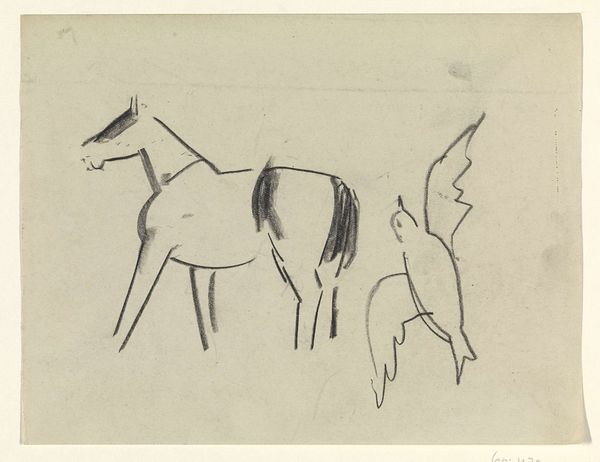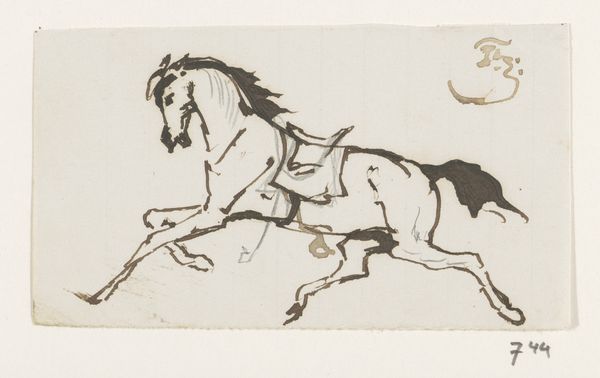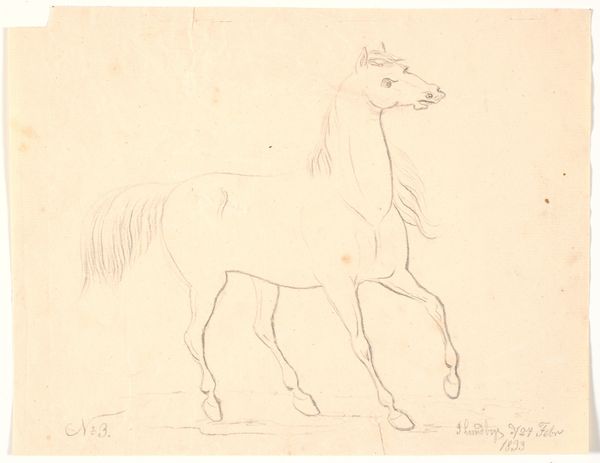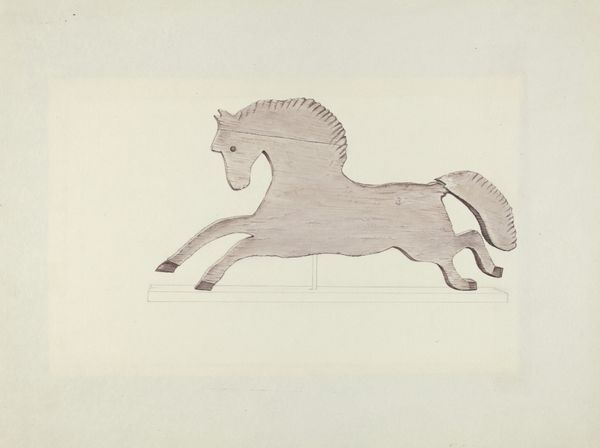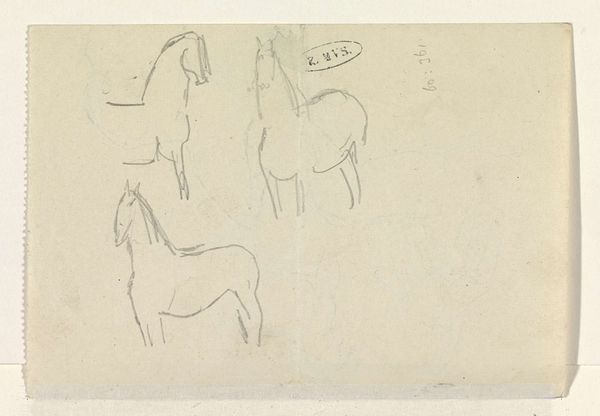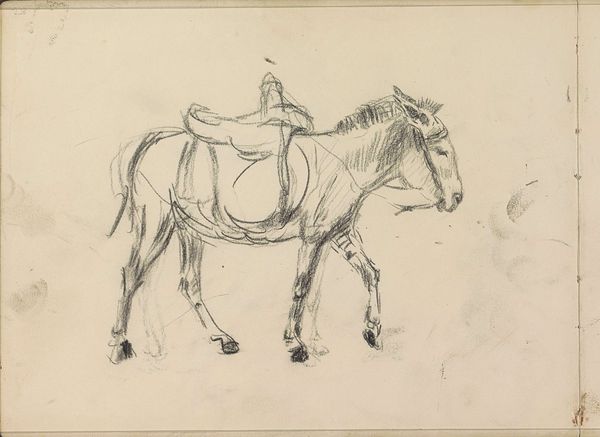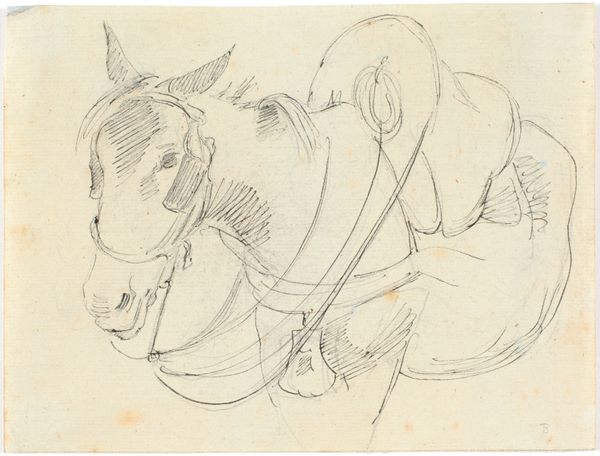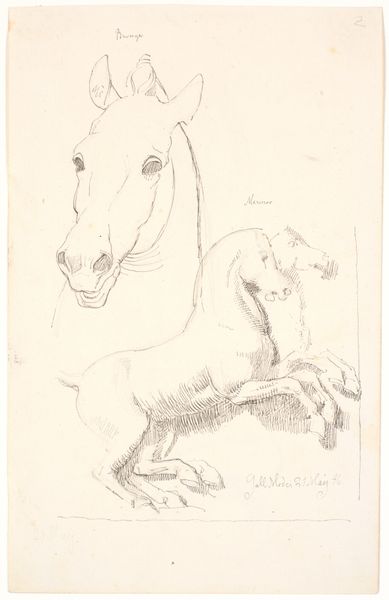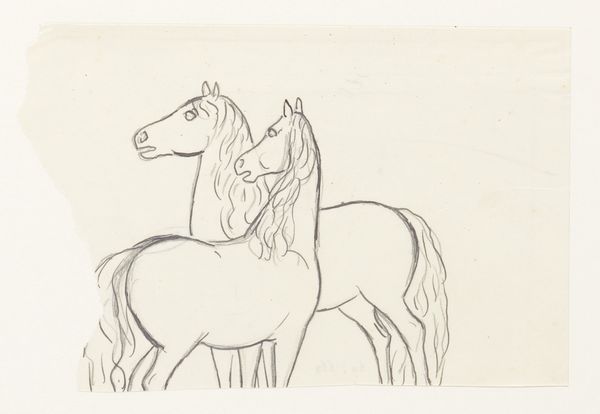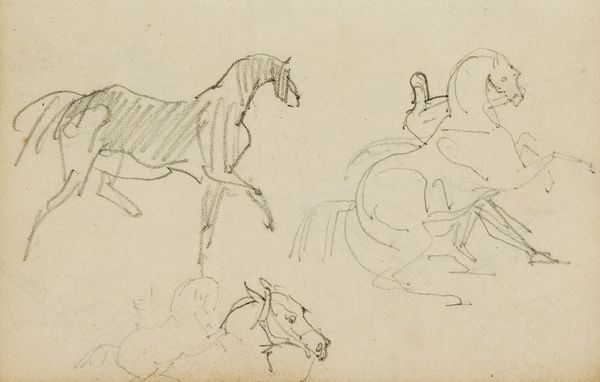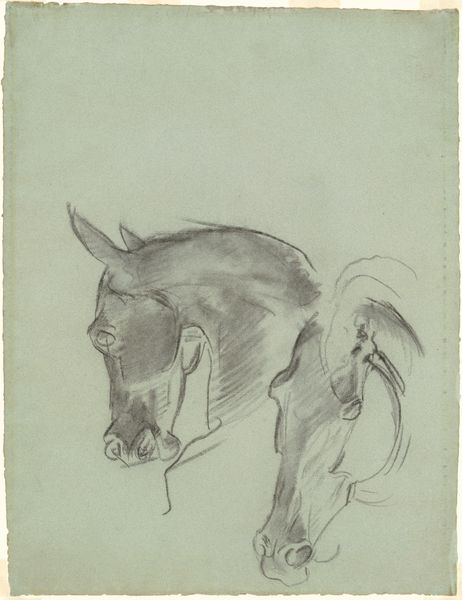
drawing, paper, ink
#
drawing
#
figuration
#
paper
#
form
#
ink
Dimensions: overall: 22.5 x 28.9 cm (8 7/8 x 11 3/8 in.) Original IAD Object: Jug: 17" High 6 3/4" Dia(base) 2 3/4" Dia(top)
Copyright: National Gallery of Art: CC0 1.0
Editor: Here we have Yolande Delasser's "Jug," created around 1937, a drawing in ink on paper. There’s a sketch of a horse, and also a jug with a horse on it. I'm struck by the almost childlike quality of the linework. What’s your take on this piece? Curator: Well, given Delasser’s time, let's consider the societal function of art in the late 1930s. The world was grappling with the rise of totalitarian regimes, and many artists were grappling with the purpose and power of imagery. There’s almost a primitivist desire in this horse drawing: the line is raw, it’s immediate. Does that horse look heroic to you? Editor: Not really, it’s pretty simplified. More like a doodle than a powerful symbol. Curator: Exactly. Consider the political climate. Powerful leaders were employing grand, heroic imagery for propaganda. So, could Delasser be consciously subverting that with this deliberately unrefined image of a horse? And then she juxtaposes it with another horse on a common household item. It’s almost deflating any potential for glorification. Editor: I didn’t think about it like that! I was just focused on the drawing style. So, the "Jug," or the quotidian item, helps demystify the symbolic power of the animal? Curator: Precisely! Think about the institution of art itself. What is celebrated versus what is dismissed. Is a 'quick' sketch of equal merit compared to academic artwork of that period? By drawing a horse and a "Jug", Delasser is democratizing visual representation. What do you make of that tension? Editor: I see now that it invites you to reconsider established imagery through ordinary scenes. Thanks, I definitely have more food for thought now! Curator: And I am grateful that you reminded me how relevant Delasser's voice remains today!
Comments
No comments
Be the first to comment and join the conversation on the ultimate creative platform.
